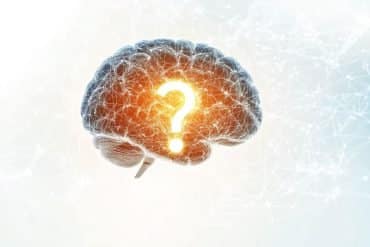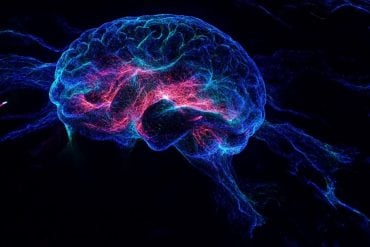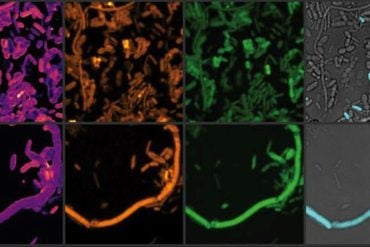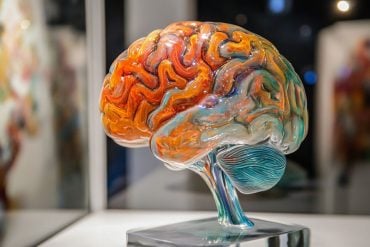Simultaneously using mobile phones, laptops and other media devices could be changing the structure of our brains, according to new University of Sussex research.
A study published today (24 September) reveals that people who frequently use several media devices at the same time have lower grey-matter density in one particular region of the brain compared to those who use just one device occasionally.
The research supports earlier studies showing connections between high media-multitasking activity and poor attention in the face of distractions, along with emotional problems such as depression and anxiety.
But neuroscientists Kep kee Loh and Dr Ryota Kanai point out that their study reveals a link rather than causality and that a long-term study needs to be carried out to understand whether high concurrent media usage leads to changes in the brain structure, or whether those with less-dense grey matter are more attracted to media multitasking.
The researchers at the University of Sussex’s Sackler Centre for Consciousness used functional magnetic resonance imaging (fMRI) to look at the brain structures of 75 adults, who had all answered a questionnaire regarding their use and consumption of media devices, including mobile phones and computers, as well as television and print media.
They found that, independent of individual personality traits, people who used a higher number of media devices concurrently also had smaller grey matter density in the part of the brain known as the anterior cingulate cortex (ACC), the region notably responsible for cognitive and emotional control functions.
Kep kee Loh says: “Media multitasking is becoming more prevalent in our lives today and there is increasing concern about its impacts on our cognition and social-emotional well-being. Our study was the first to reveal links between media multitasking and brain structure.”

Scientists have previously demonstrated that brain structure can be altered upon prolonged exposure to novel environments and experience. The neural pathways and synapses can change based on our behaviours, environment, emotions, and can happen at the cellular level (in the case of learning and memory) or cortical re-mapping, which is how specific functions of a damaged brain region could be re-mapped to a remaining intact region.
Other studies have shown that training (such as learning to juggle, or taxi drivers learning the map of London) can increase grey-matter densities in certain parts of the brain.
“The exact mechanisms of these changes are still unclear,” says Kep kee Loh. “Although it is conceivable that individuals with small ACC are more susceptible to multitasking situations due to weaker ability in cognitive control or socio-emotional regulation, it is equally plausible that higher levels of exposure to multitasking situations leads to structural changes in the ACC. A longitudinal study is required to unambiguously determine the direction of causation.”
Contact: Jacqui Bealing – University of Sussex
Source: University of Sussex press release
Image Source: The image is credited to Kep Kee Loh & Ryota Kanai and is adapted from the University of Sussex press release
Original Research: Full open access research for “High media multi-tasking is associated with smaller gray-matter density in the anterior cingulate cortex” by Kep Kee Loh and Dr Ryota Kanai in PLOS ONE. Published online September 24 2014 doi:10.1371/journal.pone.0106698
Higher Media Multi-Tasking Activity Is Associated with Smaller Gray-Matter Density in the Anterior Cingulate Cortex
Media multitasking, or the concurrent consumption of multiple media forms, is increasingly prevalent in today’s society and has been associated with negative psychosocial and cognitive impacts. Individuals who engage in heavier media-multitasking are found to perform worse on cognitive control tasks and exhibit more socio-emotional difficulties. However, the neural processes associated with media multi-tasking remain unexplored. The present study investigated relationships between media multitasking activity and brain structure. Research has demonstrated that brain structure can be altered upon prolonged exposure to novel environments and experience. Thus, we expected differential engagements in media multitasking to correlate with brain structure variability. This was confirmed via Voxel-Based Morphometry (VBM) analyses: Individuals with higher Media Multitasking Index (MMI) scores had smaller gray matter density in the anterior cingulate cortex (ACC). Functional connectivity between this ACC region and the precuneus was negatively associated with MMI. Our findings suggest a possible structural correlate for the observed decreased cognitive control performance and socio-emotional regulation in heavy media-multitaskers. While the cross-sectional nature of our study does not allow us to specify the direction of causality, our results brought to light novel associations between individual media multitasking behaviors and ACC structure differences.
“High media multi-tasking is associated with smaller gray-matter density in the anterior cingulate cortex” by Kep Kee Loh and Dr Ryota Kanai in PLOS ONE doi:10.1371/journal.pone.0106698.






